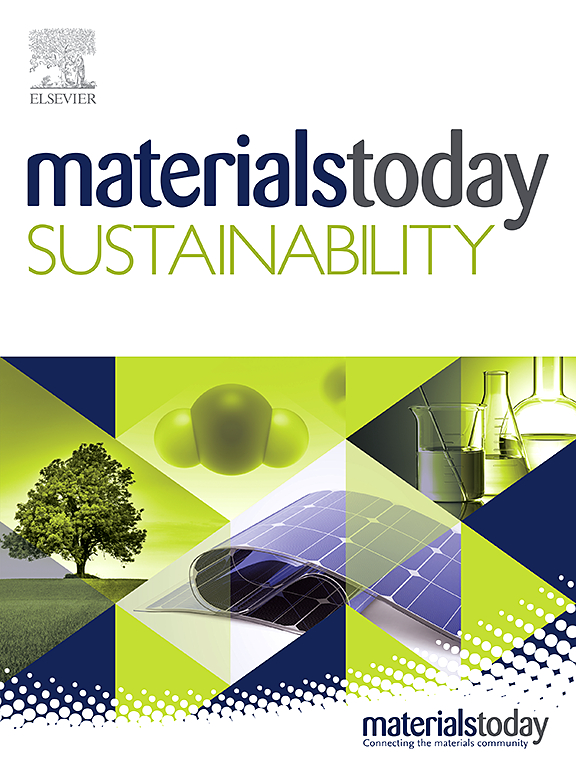A targeted biomineralization strategy for sustainable reinforcement of loess: Waste carbon fiber-guided enzyme-induced carbonate precipitation
IF 7.9
3区 材料科学
Q1 GREEN & SUSTAINABLE SCIENCE & TECHNOLOGY
引用次数: 0
Abstract
Loess is prone to erosion and structural failure due to weak cementation and low strength. This study investigates a novel reinforcement method combining enzyme-induced carbonate precipitation (EICP) with recycled carbon fiber. Direct shear tests and disintegration experiments were conducted to evaluate the mechanical strength and water stability of modified loess. Scanning electron microscope (SEM) and mercury intrusion pore measurement (MIP) were employed to explore the reinforcement mechanism at the microscale. Results showed that EICP and carbon fibers synergistically enhanced loess shear strength, with optimal cohesion achieved at 0.1 % fiber content and 1.5 mol/L cementation concentration. The combined treatment significantly improved water stability under prolonged immersion. At the microscopic scale, carbon fibers provided heterogeneous nucleation sites for CaCO3, promoting the formation of a “fiber–CaCO3–soil” composite network. Furthermore, carbon fibers mainly contribute to the macro-pore filling, and EICP mainly functions for filling smaller pores. This study offers a sustainable solution for loess stabilization and expands the reuse of carbon fiber waste in geotechnical engineering.

黄土可持续加固的目标生物矿化策略:废碳纤维引导的酶诱导碳酸盐沉淀
黄土胶结性弱,强度低,易发生侵蚀和结构破坏。本文研究了一种将酶诱导碳酸盐沉淀(EICP)与再生碳纤维相结合的新型增强方法。通过直剪试验和崩解试验对改性黄土的力学强度和水稳定性进行了评价。采用扫描电镜(SEM)和压汞孔测量(MIP)对微尺度下的强化机理进行了探讨。结果表明:EICP与碳纤维具有协同增强黄土抗剪强度的作用,纤维含量为0.1%、胶结浓度为1.5 mol/L时,粘聚性最佳;复合处理显著提高了长时间浸泡下的水稳定性。在微观尺度上,碳纤维为CaCO3提供了异质成核位点,促进了“纤维- CaCO3 -土壤”复合网络的形成。碳纤维主要对大孔隙进行填充,EICP主要对小孔隙进行填充。本研究为黄土稳定提供了可持续的解决方案,并扩大了碳纤维废弃物在岩土工程中的再利用。
本文章由计算机程序翻译,如有差异,请以英文原文为准。
求助全文
约1分钟内获得全文
求助全文
来源期刊

Materials Today Sustainability
Multiple-
CiteScore
5.80
自引率
6.40%
发文量
174
审稿时长
32 days
期刊介绍:
Materials Today Sustainability is a multi-disciplinary journal covering all aspects of sustainability through materials science.
With a rapidly increasing population with growing demands, materials science has emerged as a critical discipline toward protecting of the environment and ensuring the long term survival of future generations.
 求助内容:
求助内容: 应助结果提醒方式:
应助结果提醒方式:


